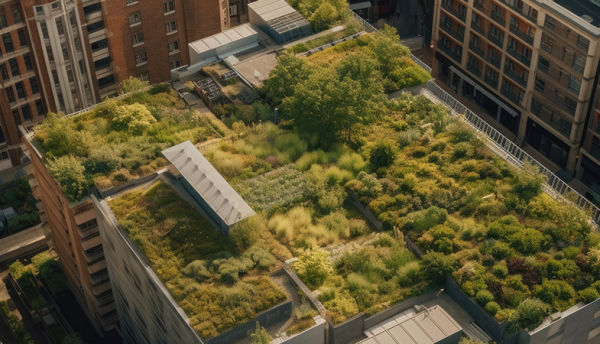From mammals to insects, ensuring there is space and consideration for all inhabitants is a sign of a well-designed built environment. Among all our efforts for sustainability, whether that is focusing on waste and pollution or throwing funding at energy and water, we often push biodiversity down the priority list.
From the installations of motorway tunnels and bridges to replacing streetlamps with amber or red lights for the encouragement of nocturnal life, integrating wildlife-friendly methods into our own built environment has seen simple solutions with great impact but has been at an unnecessarily slow pace. Not forgetting that the results of pushing wildlife from our habitats whilst destroying their own are not only devastating results for the animals but also for us. In this article, we hear from Dr David Smith, Director of Ecological Planning and Research (EPR) on how we can develop our environment while balancing the needs of our wildlife.
The construction industry, while instrumental in shaping our urban landscapes and accommodating a growing population, also bears responsibility to minimise its impacts on wildlife and where possible – to enhance it. Development can lead to habitat destruction, degradation and fragmentation, with consequential repercussions on local ecosystems.
From an ecological perspective, building on intensive agriculture land will often provide more opportunities to minimise harm and leverage benefits while meeting housing needs. This is because intensive farmlands can be ‘ecological deserts’, compared to biodiverse brownfield sites. This approach uses private (and sometimes public) finance to restore ecologically degraded landscapes into wildlife rich habitats of wildflower grasslands, native mixed-species scrublands, native broad-leaved woodlands and wetlands. This in turn increases the abundance of flowers, fruit, seeds and invertebrates and the benefits ripple up the food chain to declining bird and mammal populations. Forward thinking developers therefore have a chance to create high-quality living spaces and foster a closer connection between residents and nature. If done well, this also provides opportunities to sequester carbon and improve climate resilience.
We must appreciate the intricate ecological balance required by flora and fauna – above and below ground. In all wildlife conservation efforts – whether undertaken by a wildlife conservation organisation, a public entity, a private individual or a corporation – there exists a delicate equilibrium among the often-competing needs of diverse species.
Carefully planned development on intensive farmland can create new ‘homes’ for certain species of bees, swifts, house sparrows, starlings and bats, alongside habitats that will significantly increase the amount and diversity of food. Nevertheless, even with an overall increase in biodiversity, the loss of farmland specialists like the skylark can still occur without appropriate mitigation measures.
Though development may not be the primary cause of the historic decline in farmland bird populations, certain areas now hold greater significance due to the unfortunate loss that has occurred because of policies that have encouraged more intensive agricultural practices. Hence, those areas that now support the remaining fragments of important farmland bird assemblages’ merit increased attention by ecological consultants. In doing so, it’s essential to recognise that not all intensive farmland is equal. Ecologically speaking, an area supporting only breeding skylarks, for example, holds less importance than an area supporting breeding grey partridge, corn bunting, yellowhammer and breeding skylark.
Presenting this information clearly and transparently ensures that all stakeholders involved in the process can understand and easily access it. This approach facilitates constructive inquiries regarding specific projects and assists decision making by planning officers, council members or inspectors in factoring ‘ecology’ into complex, multifaceted considerations – where other important factors, such as food security, are also considered in the planning process.
Practically, one of the most effective ways to ensure wildlife is considered in development is to document the species present and their precise locations. Technology is critical in this, whether it be remote camera, infra-red cameras, static records or DNA technology. Once the records are complied, they should be submitted to relevant local natural history recording societies and biological record centres. This information often serves as the initial reference point for any ecological consultant. Understanding what others have recorded in a particular area aids other ecologists in their work and to understand the risks and opportunities associated with any given future project in the same locality.
It’s also worth noting that cataloguing species in a list is not enough. Instead, considering their relative abundance is crucial because some species carry more weight in the planning process due to their rarity or conservation priority significance than more common and widespread species.
Ecological consultants, using the latest technology whenever practicable, need to remain at the forefront of development so that there remains a balance between new homes and other built infrastructure and the natural world.
Click below to share this article

